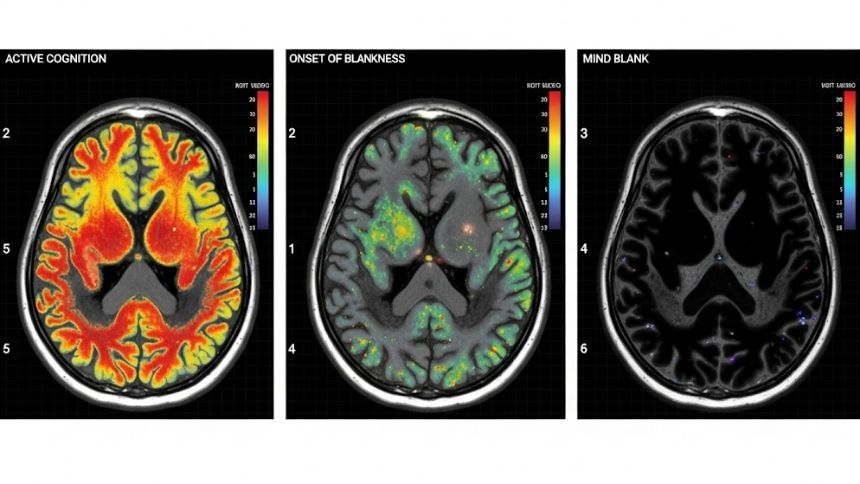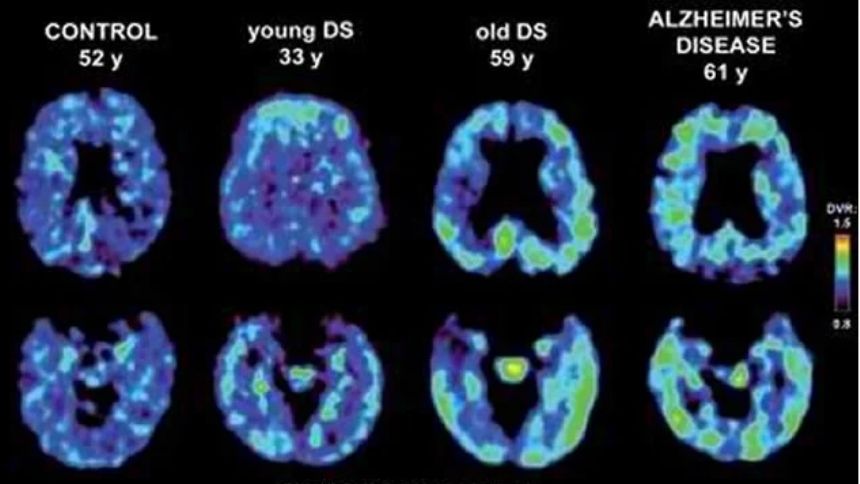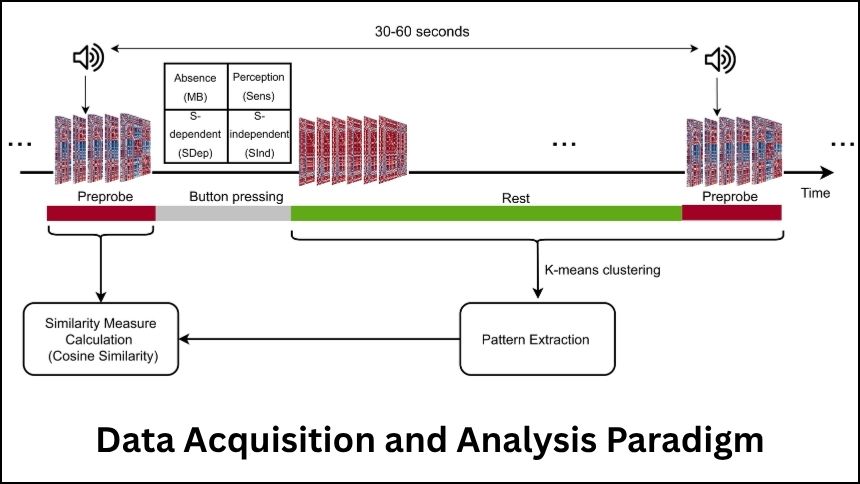When your mind goes blank, it may seem as though your brain has simply switched off, leaving a void with no thoughts. However, brain science reveals a far more fascinating story. Recent research using advanced brain imaging techniques shows that during these moments, parts of your brain enter a state very similar to deep sleep — even though you remain awake and alert.

Understanding this brain phenomenon provides insight into everyday lapses, how our brain manages fatigue, attention, and recovery. This detailed article explains what brain scans reveal about mind blanking, why it happens, and what it means for mental health, productivity, and wellbeing.
Table of Contents
What Is Mind Blanking?
Mind blanking describes sudden moments when your thoughts stop abruptly, as if your brain is a blank canvas. Unlike mind wandering, where your thoughts drift to unrelated topics, mind blanking is the actual absence of any reportable mental content — no images, no feelings, no conscious thoughts. It is like “the lights are on, but no one’s home.”

Estimates suggest mind blanking may occur in about 5% to 20% of waking life, varying by individual and context such as fatigue, stress, or neurological differences. Clinically, it’s relevant to areas like attention disorders and anxiety.
Brain Scans Reveal What Really Happens When Your Mind Goes Blank
| Key Points | Data / Facts | Career & Professional Insight |
|---|---|---|
| Mind blanking is a measurable brain state | Occurs in 5–20% of waking hours | Important in cognitive therapy and attention studies |
| Brain exhibits deep sleep-like activity | Increased synchronization, slow brain waves | Consider in fatigue management for high-focus roles |
| Key brain areas affected: Broca’s area, hippocampus | Deactivation during blanking episodes | Mental health professions should note neural health importance |
| Different from daydreaming or mind wandering | No active thoughts or content | Useful in training cognitive resilience and mindfulness |
| Linked to physiological arousal levels | High or low arousal triggers blanking | Relevant to sleep research and clinical neurology |
| Can be deliberately induced through meditation | Meditation shares neural mechanisms | Mindfulness practice leverages this knowledge |
| Represents local brain sleep to recover | Helps reset and conserve brain energy | Emphasizes importance of work-rest balance |
Mind blanking is a fascinating brain state where parts of your brain momentarily enter a deep sleep-like mode while you remain awake. This state helps the brain rest and recover during fatigue or stress. Understanding this sheds light on mental lapses, focus, and the incredible complexity of consciousness.
By prioritizing good sleep, managing stress, and practicing mindfulness, you can maintain better cognitive health and reduce disruptive mind blanking episodes.
Official study link for reference: PNAS
What Brain Scans Reveal About Mind Blanking
EEG: Slow Brain Waves and Reduced Complexity
Using Electroencephalography (EEG), researchers found that during mind blanking, brain waves slow down, resembling the slow waves seen in deep sleep. This state features:
- Reduced signal complexity where brain waves become more regular and less varied.
- Slower heart rate and smaller pupil size, indicators of lowered alertness.
This suggests the brain partially “checks out,” shutting down some functions while staying awake.
Functional MRI: Brain Hyperconnectivity and Deactivation
Functional Magnetic Resonance Imaging (fMRI) studies reveal:
- Hyperconnectivity with increased synchronized activity across brain regions, which contrasts with the diversity of brain activity typically seen when awake.
- Deactivation in essential cognitive areas like Broca’s area (speech and thoughts), the hippocampus (memory formation), and the supplementary motor area.
- This coordinated dampening disrupts normal mental processes, causing the “blank mind” experience.
Local Sleep Phenomenon
Researchers describe mind blanking as a form of local sleep — where parts of the brain enter a sleep-like state even though the person remains conscious. This mechanism allows the brain to restore itself after heavy mental exertion or sleep deprivation.
Why Does the Mind Go Blank?

Mind blanking often happens when the brain is coping with:
- Mental or physical fatigue after prolonged concentration or physical exertion.
- Sleep deprivation, which triggers more local sleep episodes during wakefulness.
- High or low arousal states — both overstimulation and drowsiness may provoke blanking.
- Neurological or psychiatric conditions such as ADHD or anxiety disorders can increase blank episodes.
Scientists believe mind blanking helps conserve energy and reset neural networks, thereby supporting overall cognitive health.
Mind Blanking Versus Mind Wandering: Understanding the Difference
- Mind wandering involves spontaneous thoughts drifting randomly.
- Mind blanking is a complete absence of thought or mental content.
Grasping this difference is critical for researchers and clinicians working on attention and cognitive health.
Practical Strategies to Prevent or Manage Mind Blanking
While mind blanking happens naturally, you can reduce its disruption by:
1. Prioritizing Sleep
Aim for 7-9 hours of quality sleep per night. Solid sleep habits optimize brain vigilance and reduce tiredness-driven blanking.
2. Managing Stress and Mental Load
Schedule regular breaks to let your brain reset during heavy cognitive work. Practice calming exercises like deep breathing.
3. Practicing Mindfulness Meditation
Mindfulness meditation can train your brain to consciously enter calm blank states, improving focus and resilience against spontaneous blanking.
4. Staying Physically Active
Exercise increases cerebral blood flow, lowers stress hormones, and boosts cognitive function, which can decrease the frequency of blank episodes.
5. Monitoring Cognitive Health
If blanking becomes frequent, prolonged, or occurs with other symptoms like memory loss, seek professional advice for possible underlying conditions.
A Detailed Guide to Understanding Mind Blanking

Step 1: Recognize When It Happens
Be aware when your thoughts vanish or you suddenly lose track of your ideas.
Step 2: Understand Brain Mechanisms
Know this blank state means parts of your brain show sleep-like activity, reducing connectivity and function temporarily.
Step 3: Distinguish From Other Mental States
Mind blanking is a void of mental activity, unlike daydreaming or distraction.
Step 4: Identify Triggers
Recognize factors like fatigue, stress, and poor sleep as common instigators.
Step 5: Apply Healthy Habits
Improve sleep, manage stress, try mindfulness, and maintain physical health.
Step 6: Seek Help if Needed
Persistent or troubling blanking, especially with cognitive symptoms, warrants medical evaluation.
Could Copper in Your Diet Protect Your Brain and Prevent Memory Loss? New Study Suggests So
Smart Brain Implants Show Promise in Transforming Parkinson’s Disease Treatment
FAQs About Brain Scans Reveal What Really Happens When Your Mind Goes Blank
Q1: Is mind blanking the same as daydreaming?
No. Daydreaming involves thoughts and images, while mind blanking has no reportable mental content.
Q2: Can mind blanking be harmful?
Usually, it’s harmless and brief. If frequent or accompanied by memory issues, it may require medical evaluation.
Q3: Does everyone experience mind blanking?
Most people do, but frequency varies depending on health and lifestyle.
Q4: How does sleep affect mind blanking?
Poor sleep increases blanking by causing fatigue and local sleep-like episodes.
Q5: Can meditation help with mind blanking?
Yes, meditation fosters the ability to deliberately enter and exit blank mental states, improving focus.



















